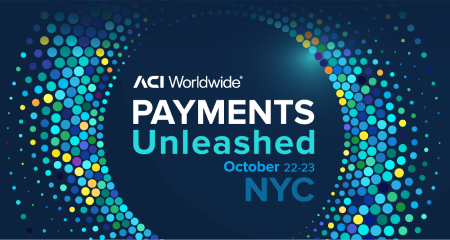I recently took part in a Becker’s Hostpital Review webinar, alongside Terri Meier, System Director – Patient Revenue Cycle for UC San Diego Health, and Mark Archer, Co-founder of Noggintechs. We discussed the various strategies and technologies that can be employed to raise patient financial satisfaction.
UC San Diego Health’s Challenge
When Meier first came to UC San Diego Health, the biggest issue in billing was quite obvious to her. “Billing was handled by two separate departments; one for hospital and one for professional services,” she said. “Our patients were receiving two payment statements, had to set up two payment plans and had to call two customer service departments regarding bills.”
This led to an inefficient system where patients received different answers depending upon whom they called.
And speaking of calls, Meier pointed out that their patient advocacy department, which handles concerns and issues of patients, was receiving an increasing number of complaints specifically about the billing experience. Not only was billing responsible for poor patient experience in some cases, it also led to internal inefficiencies that hindered performance.
To add to all of this, UC San Diego Health had competition (literally) across the street. If they couldn’t deliver a satisfying payments experience, they risked losing patients to competitors.
Prioritizing Change
“Improving the patient experience was a priority,” explained Meier. “The billing component does have a great impact. Even if the clinical care is good, the last thing that patients remember is getting that bill, and the struggle they had in paying that bill at times.”
With this in mind, it was decided that the revenue department would be restructured under one director, creating a chance to align the entire department. The first step was to hire an executive director to lead the team, and according to Meier, the candidate they ultimately hired had noticed in their research that people loved the care they received, but not the billing.
Since leadership was keenly aware of the situation, it was easy to create a business case for transformation.
Solutions to Satisfy
Meier and her team were looking to create unity within the revenue department. They implemented Epic Single Billing Office, which provided Meier a chance to look at the role of the customer service reps and the organizational structure as a whole. This led to the hiring of more billing and collection experts, who could deliver insightful payment answers for patients.
Meier’s team also unified policies and procedures to ensure the entire team was working from the same foundation. They analyzed patients’ reasons for calling and developed response guides so that patients received consistent answers, regardless of with whom they ultimately spoke. “Those patients who do end up calling in, having the right person on the other end of the phone who can answer that phone call, is really the turning point for us.”
A big priority was the simplification of the patient statement. The team put a lot of time into developing a much clearer statement, which was created with the help of patient advocacy groups. This new statement is very clean and works towards a single goal – to elicit a specific payment from the patient.
The team also optimized their interactive voice response (IVR) system to deliver a best-in-class experience for patients who still need to call. This IVR system takes advantage of a consumer touchpoint that is not often a priority but can yield big dividends.
Finally, the team focused on analytics-driven segmentation. This segmentation allows them to deliver the right message, using the right channel, at the right time. It also helps to create a certain level of personalization, giving patients the feeling of being treated as individuals rather than numbers on a ledger.
Better Service through Technology
Mark Archer, Co-founder of Noggintechs, furthered the discussion with one declarative statement –traditional tactics are expensive and becoming less effective. The net result is that collection rates go down, costs go up and patient satisfaction nosedives.
So, what’s the answer? As Archer says, “A lot of surveys are telling us that by 2020, individuals will manage about 85 percent of their relationship with an enterprise online.”
With mobile phone ownership and internet usage climbing across all demographics, Archer says these are obvious avenues on which to focus. Given the wealth of analytics, technology and the fact that 65 percent of patients say they would consider switching providers for a better payments experience, the timing is right for medical providers to align their collection practices to patient preferences.
One of the biggest advances in payments that providers should take advantage of is real-time payments. According to Lipis Advisors, real-time payments in healthcare will grow at more than 100 percent CAGR from 2018-2022. We’ve made the case for real-time payments before, but it bears repeating: Patients’ ability to pay in real time keeps their accounts balanced and ensures they won’t suffer bounced checks or overdraft fees. There’s also the added bonus of delivering refunds or reimbursements to members in real time, which will always be a crowd pleaser.
Archer’s final piece of advice is that providers must get ahead of the customer expectation curve and redefine themselves. If done well, patients will give you more cash at a lower cost.
UC San Diego Health Builds Payments Success
The benefits of this transformation have been immediate, both internally and externally.
For employees, not only were they a part of the implementation process, but they are now more involved in hiring decisions. Meier’s team comes to a mutual decision when bringing on new teammates, ensuring that all new hires adhere to the mission of delivering a better payments experience.
For patients, Meier credits them with helping to create this new system. “A lot of it the patients built for us, with their dissatisfaction of the billing process.” Now, patients receive a simplified bill and consistent answers in the instances when they do call or reach out. They also received more personalized communications and more payment channels. It is an optimized experience for all patients.
Meier says the plan for now is to continue to expand their omni-channel customer support and to finish a double upgrade of their Epic solution to enable more mobile capabilities.
With 2019 quickly approaching, the time is now to begin crafting your 2019 budgeting and strategy for optimizing bill payments and driving patient financial satisfaction. Contact us to schedule a consultation with an ACI payments expert who can help you expand your offerings.




